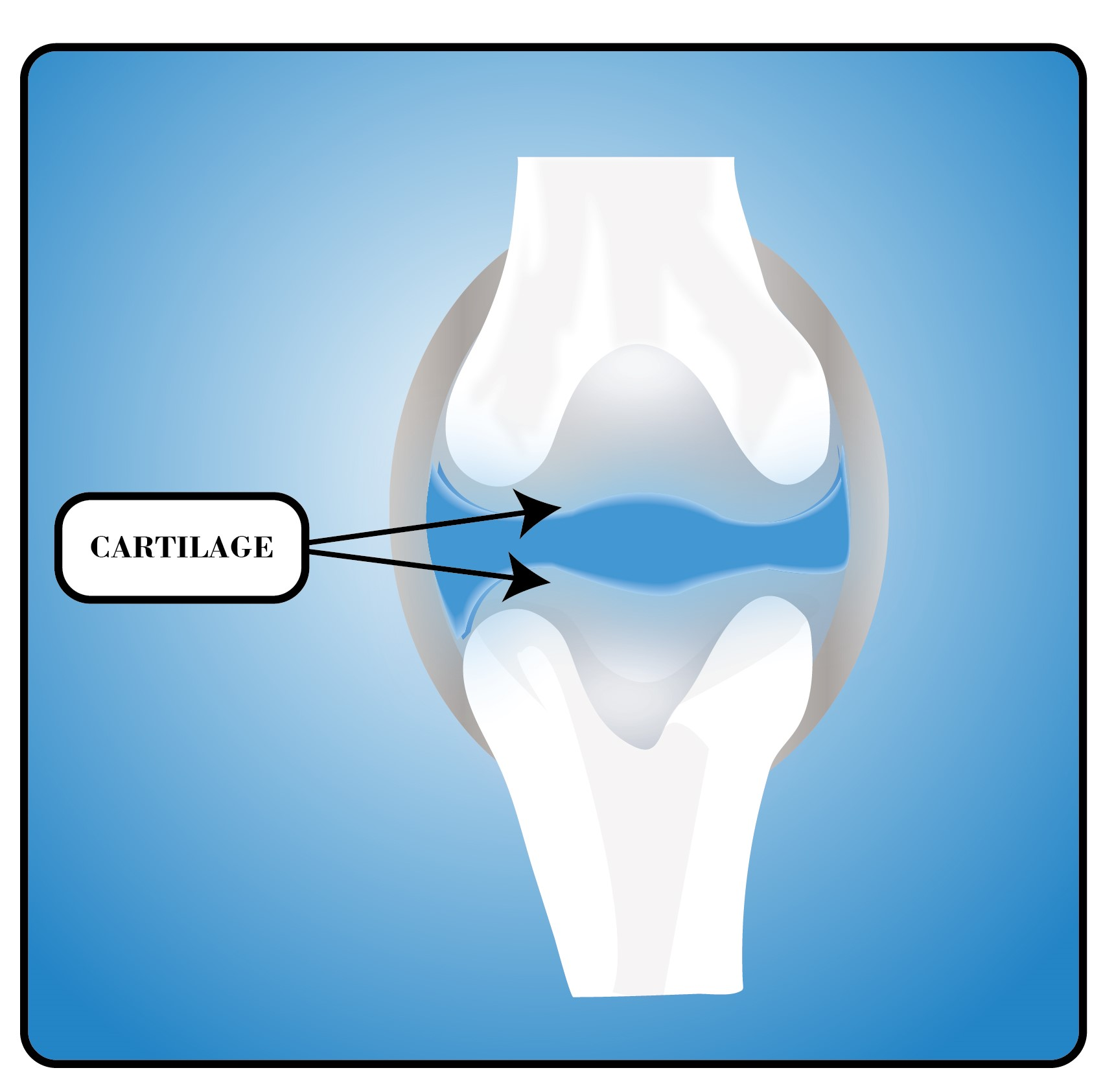
Which one acts as a shock absorber when two bones come together?
(a)Cartilage
(b)Ligament
(c)Tendon
(d)None of these
Answer
467.7k+ views
Hint: A smooth elastic tissue that is made up of chondrocytes cells and collagen fibers acting as a protective covering around the bones.
Complete answer:
The cartilage acts as a shock absorber; they are resilient tissues that cover the ends of those bones which are long and are present at the joints or nerves.
Additional Information:
-The cartilage is the tissue that is rigid and flexible than the bones and the muscles.
-The cartilage consists of various fibers including collagen, elastin, proteoglycans, and glycosaminoglycans.
-It is mostly found in the area around the ribcage, ear, nose, bronchi, etc.
-They sometimes hold body tubes due to the presence of collagen fibers.
-Cartilages are of three types: elastic cartilage, headline cartilage, and fibrocartilage.
-The cartilages vary depending upon the presence of collagen and proteoglycan.
-The blood vessels and nerves are not present inside the cartilage.
-By the process of diffusion through chondrocytes, nutrition is supplied to the body.
-It is mesodermal in origin which is derived from the mesoderm germ layer during embryogenesis.
-The cartilage shows very little repair capabilities.
-The cartilage cannot be observed simply by X-rays, it requires dye to stain then only it will appear on the X-ray.

So, the correct answer is ‘Cartilage’.
Note: The cartilage was first observed and discovered during the fourth century by Aristotle (384-322). The word cartilage was derived from the French and English word cartilage, meaning ‘cartilage’. In medical science, the word ‘chondro' is used to describe the cartilage. The cartilage is made up of chondroblasts cells and chondrocytes along with the matrix containing 10% aggrecan, 75% water, and a mixture of collagen and other substances.
Complete answer:
The cartilage acts as a shock absorber; they are resilient tissues that cover the ends of those bones which are long and are present at the joints or nerves.
Additional Information:
-The cartilage is the tissue that is rigid and flexible than the bones and the muscles.
-The cartilage consists of various fibers including collagen, elastin, proteoglycans, and glycosaminoglycans.
-It is mostly found in the area around the ribcage, ear, nose, bronchi, etc.
-They sometimes hold body tubes due to the presence of collagen fibers.
-Cartilages are of three types: elastic cartilage, headline cartilage, and fibrocartilage.
-The cartilages vary depending upon the presence of collagen and proteoglycan.
-The blood vessels and nerves are not present inside the cartilage.
-By the process of diffusion through chondrocytes, nutrition is supplied to the body.
-It is mesodermal in origin which is derived from the mesoderm germ layer during embryogenesis.
-The cartilage shows very little repair capabilities.
-The cartilage cannot be observed simply by X-rays, it requires dye to stain then only it will appear on the X-ray.

So, the correct answer is ‘Cartilage’.
Note: The cartilage was first observed and discovered during the fourth century by Aristotle (384-322). The word cartilage was derived from the French and English word cartilage, meaning ‘cartilage’. In medical science, the word ‘chondro' is used to describe the cartilage. The cartilage is made up of chondroblasts cells and chondrocytes along with the matrix containing 10% aggrecan, 75% water, and a mixture of collagen and other substances.
Recently Updated Pages
Can anyone list 10 advantages and disadvantages of friction

What are the Components of Financial System?

How do you arrange NH4 + BF3 H2O C2H2 in increasing class 11 chemistry CBSE

Is H mCT and q mCT the same thing If so which is more class 11 chemistry CBSE

What are the possible quantum number for the last outermost class 11 chemistry CBSE

Is C2 paramagnetic or diamagnetic class 11 chemistry CBSE

Trending doubts
10 examples of friction in our daily life

The correct order of melting point of 14th group elements class 11 chemistry CBSE

Difference Between Prokaryotic Cells and Eukaryotic Cells

One Metric ton is equal to kg A 10000 B 1000 C 100 class 11 physics CBSE

What is the specific heat capacity of ice water and class 11 physics CBSE

State and prove Bernoullis theorem class 11 physics CBSE




